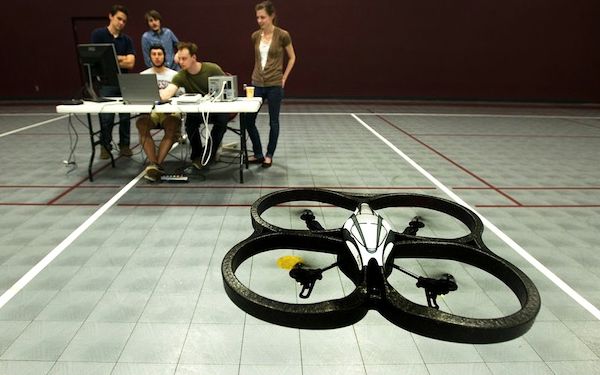
A recent study conducted at the University of Minnesota and published in the Journal of Neural Engineering has examined robot-human interaction – by designing an interface that allows humans to control a robot using their thoughts alone.
By just imagining using your right or left hand, the experimental subjects are able to control a quadcopter going left or right. By thinking of using both their hands they could make the quad-copter to go up. And by not thinking of their hand at all they made the quad-copter go down.
On their heads they electrodes that measured the electrical signals (EEG) going from the cerebral cortex. The signals are translated by a computer and sent wirelessly to an ordinary commercial quad-copter type AR Drone.
After some training, they are able to fly the quad-copters through a pre-established flight path at a speed of 0.7 meters per second.
Similar experiments have been conducted at other university’s around the world, among those, a very similar experiment at the Zhejiang University in China. And considerable advancements have been achieved in just over few years. Human brain-computer interaction technology could help people with neurological injuries resulting in paralysis in the future.
https://youtu.be/6LWz4qa2XQA
______________
Quadcopter control in three-dimensional space using a noninvasive motor imagery-based brain–computer interface
____________________________






















